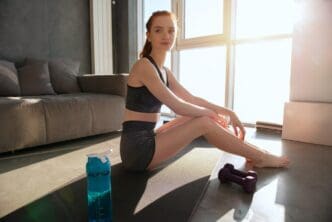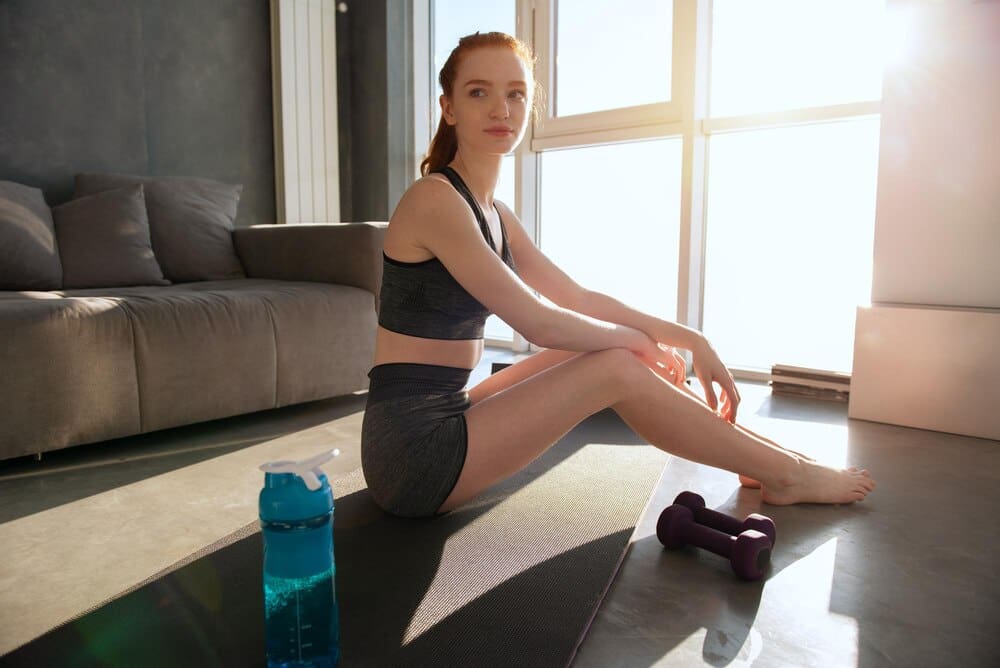Building stronger legs is a foundational goal for nearly everyone, from elite athletes seeking a performance edge to individuals wanting to improve their daily functional movement and long-term health. The most effective path to achieving this involves a consistent training regimen, typically performed two to three times per week, that integrates multi-joint compound exercises like squats and deadlifts with targeted isolation movements. This comprehensive approach, executable both in a fully-equipped gym or with modifications at home, is crucial not only for enhancing athletic power and aesthetic definition but also for boosting metabolism, improving balance, and significantly reducing the risk of injury in both sport and everyday life.
Why Leg Strength is a Non-Negotiable Health Investment
Many people associate leg day with building bigger muscles, but the benefits extend far beyond the mirror. Your legs house the largest muscle groups in your body, including the glutes, quadriceps, and hamstrings. Training these muscles is one of the most powerful investments you can make in your overall wellness.
First, strengthening your legs directly enhances your functional fitness. Every time you stand up from a chair, climb a flight of stairs, or lift a heavy box from the floor, you are performing a variation of a squat or a deadlift. Stronger legs make these daily tasks feel effortless and protect your lower back from strain.
From a metabolic standpoint, building more muscle mass in your legs increases your basal metabolic rate (BMR). This means your body burns more calories at rest, making it a powerful tool for weight management. The sheer effort required for heavy leg exercises also creates a significant caloric expenditure during the workout itself.
Finally, strong legs are your body’s primary shock absorbers and stabilizers. The muscles surrounding your hips, knees, and ankles work in concert to maintain balance and protect your joints from impact. This dramatically reduces the risk of falls and common injuries, particularly to the knees and lower back, ensuring you remain active and mobile for years to come.
Understanding Leg Anatomy: The Muscles You’re Targeting
To train your legs effectively, it helps to understand the primary muscles you’re working. A well-rounded leg workout addresses all these major groups, ensuring balanced development and functional strength.
The Quadriceps
Located on the front of your thigh, the quadriceps femoris is a group of four muscles. Their primary function is knee extension—straightening your leg. These muscles are heavily engaged during the upward phase of a squat and are the prime movers in exercises like leg extensions.
The Hamstrings
The hamstrings run along the back of your thigh and are responsible for knee flexion (bending your knee) and hip extension (moving your leg backward). They are crucial for explosive movements like sprinting and jumping and are targeted by exercises like deadlifts and leg curls.
The Gluteal Muscles
Often referred to as the “glutes,” this group includes the gluteus maximus, medius, and minimus. The gluteus maximus is the largest muscle in the body and a powerful hip extensor. Strong glutes are the engine behind your squats, deadlifts, and lunges, contributing to power, stability, and a strong posterior chain.
The Calves
The lower leg is comprised of the gastrocnemius (the larger, visible calf muscle) and the soleus (a smaller muscle underneath). They are responsible for plantar flexion, the movement of pointing your toes downward, which is essential for walking, running, and jumping. They are best isolated with calf raise variations.
The Essential Compound Exercises for Maximum Gains
Compound exercises are multi-joint movements that recruit multiple muscle groups simultaneously. They are the most efficient way to build overall strength and muscle mass, forming the cornerstone of any effective leg day.
The Barbell Back Squat: The King of Leg Exercises
The squat is arguably the single most effective exercise for lower body development. It engages the quadriceps, glutes, hamstrings, and core, building raw strength and muscle like no other movement. Proper form is paramount to reap the benefits and avoid injury.
To perform a back squat, position a barbell across your upper back, resting it on your traps, not your neck. Stand with your feet shoulder-width apart, toes pointing slightly outward. Brace your core, keep your chest up, and initiate the movement by pushing your hips back as if sitting in a chair. Lower yourself until your thighs are at least parallel to the floor, then drive through your heels to return to the starting position.
The Deadlift: Building Total-Body Power
While often considered a back exercise, the deadlift is a phenomenal builder of the entire posterior chain, including the glutes and hamstrings. It teaches you to lift heavy objects safely from the floor, a fundamental human movement pattern. Variations like the Romanian Deadlift (RDL) place an even greater emphasis on the hamstrings and glutes.
For a conventional deadlift, stand with your mid-foot under the barbell. Hinge at your hips and bend your knees to grip the bar just outside your shins. Keeping your back straight and chest up, drive through your feet and extend your hips and knees to lift the weight, keeping the bar close to your body. Lower it with control by reversing the motion.
The Lunge: Mastering Unilateral Strength
Lunges are a form of unilateral training, meaning they work one leg at a time. This is incredibly valuable for identifying and correcting strength imbalances between your left and right sides. They also challenge your stability and coordination far more than bilateral (two-legged) exercises.
You can perform lunges by stepping forward, backward (reverse lunge), or by continuously stepping forward (walking lunge). The key is to take a controlled step and lower your hips until both knees are bent at approximately 90-degree angles. Ensure your front knee tracks over your foot but does not collapse inward.
The Leg Press: A Machine-Based Power Builder
The leg press machine allows you to move heavy weight with your legs without the same stability demands or spinal loading as a free-weight squat. This makes it a great accessory for adding volume to your leg training and pushing your quads and glutes to fatigue in a controlled environment. Focus on a full range of motion and avoid letting your lower back round off the pad at the bottom of the movement.
Crucial Isolation Exercises for Targeted Growth
After building a foundation with compound lifts, isolation exercises are used to target specific muscles. These movements are excellent for addressing weak points, improving muscle definition, and ensuring balanced development.
Leg Extensions for Quadriceps Definition
The leg extension machine isolates the quadriceps by focusing exclusively on knee extension. Since it places the load directly on the knee joint, it’s best used with moderate weight and higher repetitions after your main compound lifts. Focus on a controlled movement and squeezing the quads at the top.
Leg Curls for Hamstring Development
Just as extensions isolate the quads, leg curls isolate the hamstrings through knee flexion. Both seated and lying leg curl machines are effective. This direct work is vital for balancing the strength of your quads and preventing hamstring injuries.
Calf Raises for Lower Leg Strength
Often neglected, the calves respond best to high-volume training. Standing calf raises primarily target the gastrocnemius, while seated calf raises, with the knee bent, place more emphasis on the soleus. Incorporating both is key for complete lower leg development.
Glute Bridges and Hip Thrusts for a Stronger Posterior Chain
The hip thrust, typically performed with a barbell across the hips, is the premier exercise for directly isolating and strengthening the glutes. It allows you to use a heavy load to target the glutes’ primary function of hip extension. The bodyweight glute bridge is a great starting point or warm-up exercise for activating the glutes before a workout.
Progressive Overload: The Secret to Continuous Strength Gains
Your muscles will not grow stronger unless you consistently challenge them to do more than they are accustomed to. This principle is called progressive overload. It is the single most important factor for long-term progress.
You can apply progressive overload in several ways. The most obvious is by gradually increasing the weight you lift over time. However, you can also add more repetitions with the same weight, perform more sets, decrease your rest time between sets, or improve your technique and range of motion. The key is to consistently and systematically increase the demand on your muscles.
Track your workouts in a notebook or app. Aim to make small improvements each week—one more rep, or a slight increase in weight. This methodical approach ensures you are always moving forward and prevents plateaus.
Conclusion: Putting It All Together
Building stronger legs is a journey of consistency, not intensity. The formula is simple but requires dedication: prioritize foundational compound exercises like squats and deadlifts, supplement with targeted isolation work for balance, and consistently apply the principle of progressive overload. By focusing on proper form, listening to your body, and fueling your efforts with proper nutrition and rest, you will build a powerful, resilient, and functional lower body that will support your health and wellness goals for a lifetime.







